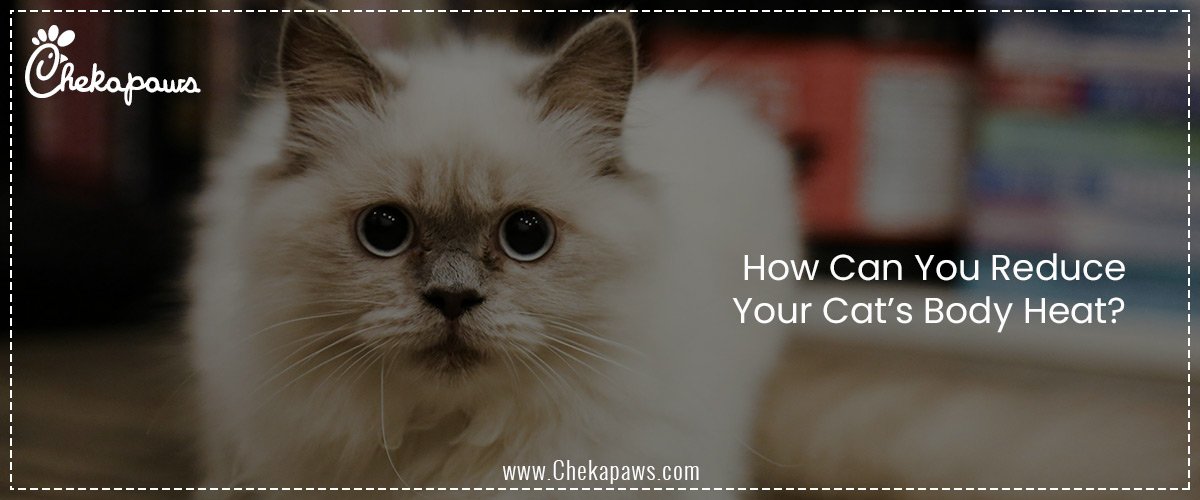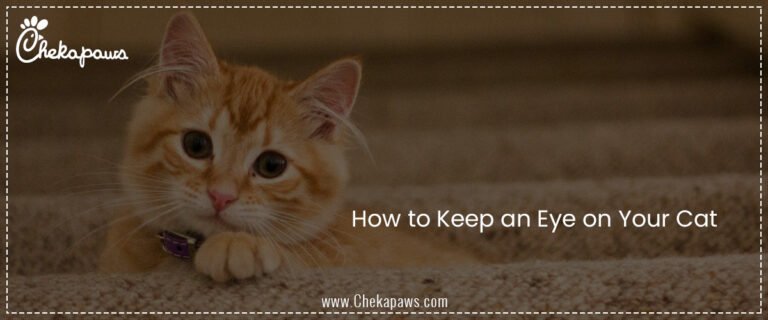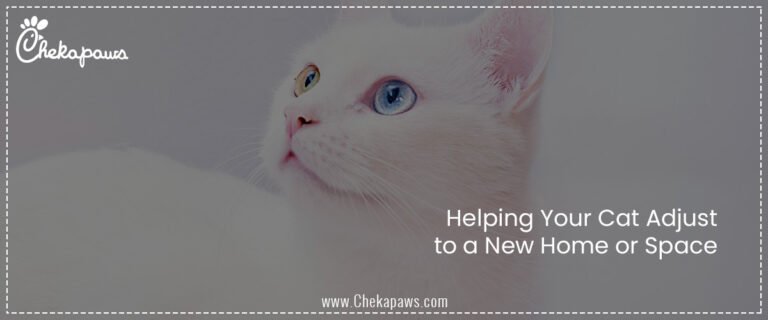It’s important to safeguard your cat’s health and avoid any medical crises by lowering their body temperature. As a veterinarian, I have witnessed numerous instances where cats may have been saved from suffering or even fatal illnesses by taking easy preventive steps.
Table of Contents
Understanding the Importance of Temperature Regulation in Cats
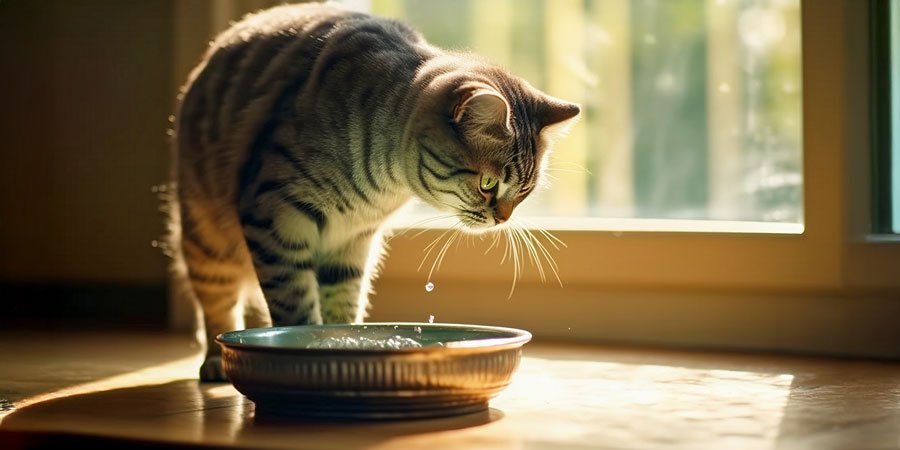
Cats are amazing animals with perfectly balanced bodies that like a particular temperature range. However, your cat can easily overheat if the temperature rises or if their internal equilibrium is upset. Cats are far more vulnerable to heat stress and heatstroke than humans because they sweat less effectively.
We’ll go into much detail in this post about how to tell when your cat is overheating, what causes excessive body heat, and the best, scientifically supported methods for properly cooling your cat. We’ll also discuss long-term tactics to keep your cat cool and content throughout the year, as well as nutrition, environment, hydration, and grooming.
These topics may also interest you:
- How to Keep an Eye on Your Cat
- Helping Your Cat Adjust to a New Home or Space
- How to Manage Pet Anxiety from Fireworks
How Cats Regulate Their Body Temperature
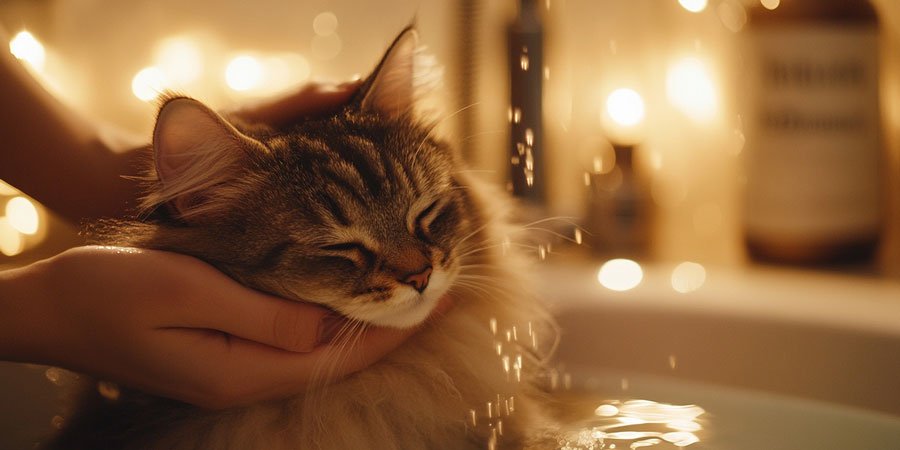
Cats’ Normal Body Temperature
The typical range of a cat’s body temperature is 100.5°F to 102.5°F (38°C to 39.2°C). Temperatures above 103°F (39.4°C) may be a sign of hyperthermia, or elevated body temperature; temperatures above 105°F (40.5°C) are dangerous and necessitate prompt veterinarian care.
The Reasons Cats Are Heat Sensitive
Because their ancestors lived in heated regions, cats are descended from deserts. They are resistant to mild heat because of this lineage, but they have also developed to hold onto moisture instead of losing it through sweat.
This is how their bodies work:
Limited Sweat Glands: Cats’ paw pads are the only places they have sweat glands. This implies that they are unable to efficiently cool themselves through sweating.
Panting: Compared to dogs, panting is less effective, but it still helps. Only when they are extremely hot do cats pant.
Grooming Behaviour: They release saliva by licking their fur, which evaporates and has a slight cooling effect.
The Environment and Behaviour’s Role
When they are overheated, cats naturally gravitate toward cooler places, such as tile floors, shaded locations, or under furniture. However, even these instincts are insufficient in situations with high temperatures or inadequate ventilation. Managing body heat requires acknowledging and encouraging your cat’s natural cooling behaviour.
These topics may also interest you:
- How to Tell if Your Cat is in Pain
- 7 Reasons Why Your Cat Is Not Eating
- Fun things to do with your pet
Recognizing the Signs of Excessive Body Heat in Cats
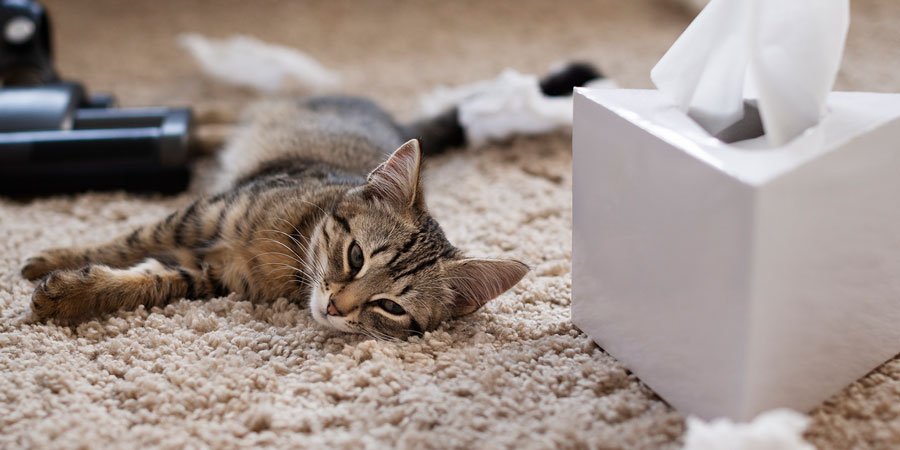
Common Behavioural Signs
A cat experiencing heat stress or high body temperature could show mild to severe symptoms, including
- Being restless or traveling around a lot to locate cool places
- Stretched out on chilly surfaces
- Lethargy or a decrease in activity
- Over-grooming (trying to cool themselves by evaporating saliva)
- Refusal to play or eat
- Looking for water more frequently
Heat Stress or Heatstroke Physical Symptoms
The following signs could be present if your cat’s temperature increases dangerously
- Open-mouth breathing or panting
- Drooling
- Vibrantly crimson gums and tongue
- Quick heartbeat
- Diarrhea or vomiting
- Weakness or swaying
- Unresponsiveness or collapsing
It’s a medical emergency right now. To avoid organ damage or death, veterinarian care must be provided right away.
Subtle Signs
Your cat’s general health may be impacted by even minor heat discomfort. If a cat stops grooming, avoids sunny spots, or hides more than normal, it may be an indication of anxiety. Since cats are skilled at concealing discomfort, early detection is crucial.
These topics may also interest you:
- The history of cats and humans living together
- 5 Tips for Training a Stubborn Pet
- Tips for keeping your pet groomed
Common Causes of Increased Body Heat in Cats
You can avoid the issue if you know why your cat’s body temperature increases. The most frequent offenders are as follows:
Environmental Factors:
- Warm weather or high temperatures inside
- Inadequate ventilation
- Exposure to direct sunlight (windows, balconies, automobiles)
- Absence of cooling areas or shade
Dehydration
A cat’s body loses its capacity to efficiently regulate temperature when it doesn’t drink enough. Older cats and long-haired breeds are especially at risk from this.
Overexertion
Overheating can result from playtime or activities in hot weather, particularly for cats with thick coats or those who are overweight.
Fever or Illness
Sometimes an infection-related fever is the cause of elevated body temperature rather than environmental factors. Inflammation, upper respiratory infections, and other systemic illnesses can cause a cat’s body temperature to rise.
Anxiety or Stress
Temperature spikes can be brought on by emotional stress. Adrenaline and stress can cause minor hyperthermia in cats kept in carriers, exposed to loud noises, or visiting the veterinarian.
Medications or Toxins
A cat’s capacity to chill down may be impacted by some medications, poisons, or anaesthetics, particularly in sensitive people.
These topics may also interest you:
- Top Tips for Keeping Your Cat Hydrated
- Essential Vaccinations for Cats
- Our Favorite Pet Toothbrushing Products
Immediate Ways to Reduce Your Cat’s Body Heat Safely
Take quick, thoughtful action when you see symptoms of overheating. Reducing the temperature gradually rather than suddenly is the aim.
Change to a Cooler Environment
Put your cat somewhere that is well-ventilated, air-conditioned, or shaded.
Avoid bright or small areas.
Offer Cool, Fresh Water
Promote drinking by providing cool, fresh water that isn’t icy. For a little cooling, add ice cubes to the bowl. To increase hydration, you can also provide wet cat food with extra water.
Apply a Moist Towel or Cloth
- Use a moist, room-temperature towel to gently clean your cat’s body.
- Pay attention to places like the paws, armpits, belly, and neck area where blood vessels are near the skin.
Avoid using ice-cold water or immersing your cat completely as this can shock them.
Make use of air circulation or fans
To help remove moisture from your cat’s fur and enhance cooling, place a fan close to them without blowing directly into their face.
Ice packs or cooling mats
Use cooling mats that are appropriate for pets, or wrap ice packs in a towel and put them close to your cat’s sleeping area. They should never be applied directly to the skin.
Increase Personal Hygiene
Allow your cat to groom if they’re not in great distress; it’s a natural way for them to calm off. However, gently step in if you see panting or sluggishness.
Avoid stress and excessive handling
Cats who are under stress hold onto more heat. Maintain a peaceful atmosphere by handling lightly and gently.
These topics may also interest you:
- 7 Best Pet Insurance Plans And Veterinary Care Options Available
- Interesting Pets That Came Into People’s Lives Unexpectedly
- Tips On Making Pet Costumes Or DIY Pet Fashion Projects
Preventing Overheating Before It Happens
Maintain a Cool Home
- In the summer, use fans or air conditioning.
- When the sun is at its strongest, close the curtains.
- Provide elevated resting places and locations with shade to allow for airflow.
- Place frozen water bottles wrapped in towels next to your cat’s bed if you don’t have air conditioning.
Methods of Hydration
Promote drinking consumption by
- Utilizing fountains for cats, who adore flowing water.
- Distributing several water bowls about the house.
- Include moist foods into their diet.
- Meals can be flavoured by adding water or tuna juice.
Optimal Grooming
- To get rid of extra fur, brush your cat frequently.
- In the summer, long-haired breeds may benefit from a little fur clipping.
- Never totally shave since fur acts as a natural insulator.
Avoid Overdoing it
Play indoors in the early morning or late evening when it’s cooler. Steer clear of strenuous play when it’s hot outside.
Never Leave Cats in Cars
Cars heat up dangerously quickly, even with windows cracked. Heatstroke can be lethal when temperatures rise above 100°F (37°C) in a matter of minutes.
Offer Accessories for Cooling
Ceramic tiles in shady regions, raised beds, or cooling mats can all have a significant impact.
These topics may also interest you:
- Why Cats Purr: A Comprehensive Guide
- Pet products you can’t live without
- Cat Food Allergies & Adverse Food Reactions
The Role of Diet and Hydration in Managing Body Heat
Dry versus Wet Food
Compared to dry kibble, wet cat food helps control body temperature and naturally enhances hydration. Make moisture-rich meals a priority during hot months.
Frozen Treats
- Make homemade frozen snacks that are safe for cats:
- Freeze unsalted chicken broth or tuna water.
- Serve occasionally as a refreshing treat.
A Well-Balanced Diet
Make sure your food is balanced and contains all the necessary nutrients; deficits might impair your body’s ability to regulate itself and your immune system.
Avoid Overfeeding
Because fat acts as insulation, overweight cats are more likely to overheat. Regular veterinary examinations and portion control will help you maintain a healthy weight.
These topics may also interest you:
- The Healing Power of Cats
- DIY Cat Wall Shelves Ideas Customize Your Cat’s Vertical Playground
- Pet Shopping Guides You Should Read Before Making A Purchase
Grooming and Coat Care to Reduce Body Heat
Repeated Brushing
Regular brushing eliminates loose fur, avoiding heat-trapping matting. For Persians, Maine Coons, and other long-haired breeds, this is essential.
Safe Trimming Techniques
Long fur can be gently trimmed by a professional groomer to increase airflow. Shaving the skin, however, is not advised because it can result in sunburn.
Considerations for Bathing
Unless your veterinarian recommends it, baths are rarely essential. Use just lukewarm water if using it to cool down, and make sure your cat is completely dry in a cool place.
These topics may also interest you:
- 5 Products That Keep Your Pet’s Mind Busy While You’re at Work
- What You Need to Know About Pet First Aid
- How to Deal with a Jealous Pet
Special Considerations for Vulnerable Cats
Kittens
Kittens are not good at controlling their body temperature. Keep their surroundings moderate—not very hot or cold—and keep an eye out for signs of dehydration.
Senior Cats
Older cats may be more susceptible to heat due to reduced circulation and health problems. Limit tension and make water and cooling areas easily accessible.
Cats That Are Overweight
Extra fat retains heat by acting as insulation. Concentrate on losing weight gradually by making dietary changes and engaging in moderate activity.
Brachycephalic Breeds (Cats with Flat Faces)
Heatstroke is more common in Persians and Exotic Shorthairs due to their shorter airways. Avoid humid situations and keep them indoors with air conditioning.
These topics may also interest you:
- 5 Common Signs of Stress in Dogs and Cats
- 10 Silly Things Our Pets Do That Are Adorable
- 5 Tips on Drama Free Cat Baths
Medical Causes of Increased Body Heat
See a veterinarian if your cat appears overheated in the absence of external factors. Among the potential medical factors are
- Bacterial or viral infections
- fever brought induced by inflammation
- Hyperthyroidism (higher metabolic rate)
- Trauma or pain
- Consumption of toxins
- Reactions to drugs
In order to identify the cause, a veterinarian examination may involve blood work, temperature monitoring, and diagnostic imaging.
These topics may also interest you:
- How To Keep Your Longhaired Cat’s Fur from Matting
- How to Introduce Your Pets to a New Baby
- How to Clip Your Pet’s Nails Without the Drama
What To Do in Case of Heatstroke
Immediate First Aid
- If your cat is collapsing, drooling, or panting excessively
- Transfer them to a cool place.
- Wash the neck, paws, and tummy with cool (not cold) moist cloths.
- Don’t push water; just provide it.
- For light air circulation, use a fan.
- Take them right away to a veterinarian.
Veterinary Care
Your veterinarian might:
- Give IV fluids to maintain body temperature and stay hydrated.
- Give oxygen therapy.
- Keep an eye out for organ damage, particularly to the brain and kidneys.
- Address the underlying reasons (shock, illness, etc.).
Rest and Care
Following recuperation, your cat might require:
- Take a nap in a quiet, cold room.
- monitoring of hydration.
- staying out of the heat for a few weeks.
These topics may also interest you:
- Common Behavioral Problems in Cats and How to Fix Them
- How to Help Your Pet Get Over Their Car Anxiety
- 10 DIY Cat Toys
Long-Term Cooling Strategies
Climate Control
Invest in:
- Pedestal or ceiling fans
- Air conditioners
- Devices for monitoring pets or temperature sensors
Home Setup
- For rest areas, use marble or ceramic tiles.
- Use breathable mats to create sheltered areas on balconies.
- Litter boxes should be kept away from sources of heat.
Regular Daily Modifications
Feed in the cooler hours of the day. Play in the late evening or early morning. Refill and replenish water bowls frequently.
These topics may also interest you:
- 5 Challenges That Made Me a Better Pet Parent
- What to Look for When Adopting a New Cat
- Why Cats Make Amazing Companions
Natural and DIY Cooling Methods
- Towel-wrapped frozen water bottles next to mattresses.
- To lower the surrounding temperature, use cool mist humidifiers.
- Water-rich treats like watermelon or cucumber slices (small, cat-safe quantities).
- When it’s hot outside, give your cat a “spa day” with a damp washcloth.
These topics may also interest you:
- How to Create a Pet-Friendly Home Without Compromising Style
- How to Socialize Your Pet: Tips for Puppies, Kittens & Rescues
- The Rise of Pet Tech: How Smart Devices Are Changing Pet Care
Myths About Cooling Cats
Myth: Cats can always stay cool by shaving.
Truth: Trimming is safer; it may result in stress and sunburn.
Myth: The greatest way to cool down is with ice water.
Truth: Use cool water, not freezing, as cold shock can be hazardous.
Myth: Since cats acquire their water from food, they don’t need it.
The truth is that cats still require daily access to fresh water.
These topics may also interest you:
- Senior Pet Care Tips. How to Keep Your Aging Pet Comfortable?
- Indoor vs. Outdoor Cats Pros and Cons
- 10 Ways to Get Involved with Pet Owners in Your City
When to Seek Veterinary Help
Get medical help if:
- 103°F (39.4°C) in temperature
- Continuous drooling or panting
- Lethargy or confusion
- refusal to consume food or liquids
- Seizures or vomiting
- Your cat’s life can be saved with prompt medical attention.
These topics may also interest you:
- Types Of Pet Allergies and How to Treat Them
- How to Introduce a New Cat to Your Home
- How to protect pet dogs, cats and strays from heat wave
Conclusion
Understanding your cat’s natural behavior, providing a secure environment, and taking prompt action when symptoms emerge are all important ways to reduce their body heat. Your attention guarantees that your cat stays comfortable and healthy—even during the hottest months—whether through appropriate hydration, grooming, home cooling techniques, or veterinary care.
We owe it to our feline companions as cat parents to create a world that honours their needs, where fresh breezes, shaded areas, and tender care keep their bodies and hearts in perfect harmony.
These topics may also interest you:
- Common health problems in cats and how to prevent them
- 10 Surprising benefits of having a cat in your life
- How to Introduce Your Cat to Other Pets
- Surprising flea facts for dogs and cats
- Why Adopting a Shelter Pet Can Change Your Life (and Theirs Too)
- Purrfect Companions: Exploring the Diversity of Pet Cats
- From Treats to Threats: The Complete Guide to Pet Food Safety
- Wolf VS Dog: What’s the Difference
- The Best Dog Beds for Puppies
- 5 Dog Products We Couldn’t Live Without
